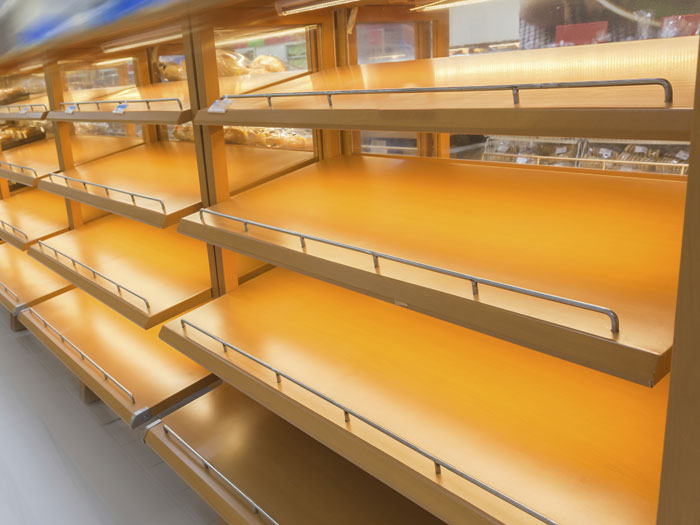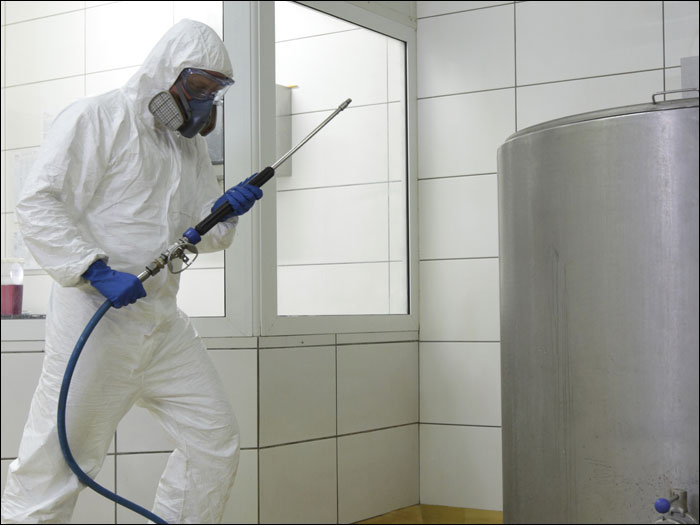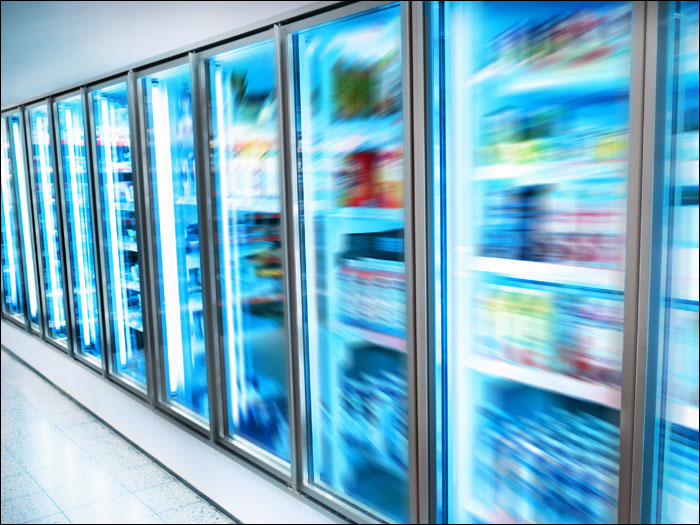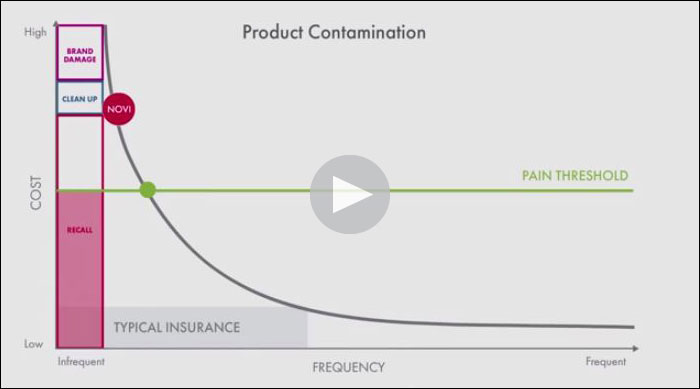Sponsored: Lexington Insurance
Pathogens, Allergens and Globalization – Oh My!

In 2014, a particular brand of cumin was used by dozens of food manufacturers to produce everything from spice mixes, hummus and bread crumbs to seasoned beef, poultry and pork products.
Yet, unbeknownst to these manufacturers, a potentially deadly contaminant was lurking…
Peanuts.
What followed was the largest allergy-related recall since the U.S. Food Allergen Labeling and Consumer Protection Act became law in 2006. Retailers pulled 600,000 pounds of meat off the market, as well as hundreds of other products. As of May 2015, reports of peanut contaminated cumin were still being posted by FDA.
Food manufacturing executives have long known that a product contamination event is a looming risk to their business. While pathogens remain a threat, the dramatic increase in food allergen recalls coupled with distant, global supply chains creates an even more unpredictable and perilous exposure.
Recently peanut, an allergen in cumin, has joined the increasing list of unlikely contaminants, taking its place among a growing list that includes melamine, mineral oil, Sudan red and others.
“I have seen bacterial contaminations that are more damaging to a company’s finances than if a fire burnt down the entire plant.”
— Nicky Alexandru, global head of Crisis Management at AIG
“An event such as the cumin contamination has a domino effect in the supply chain,” said Nicky Alexandru, global head of Crisis Management at AIG, which was the first company to provide contaminated product coverage almost 30 years ago. “With an ingredient like the cumin being used in hundreds of products, the third party damages add up quickly and may bankrupt the supplier. This leaves manufacturers with no ability to recoup their losses.”
“The result is that a single contaminated ingredient may cause damage on a global scale,” added Robert Nevin, vice president at Lexington Insurance Company, an AIG company.
Quality and food safety professionals are able to drive product safety in their own manufacturing operations utilizing processes like kill steps and foreign material detection. But such measures are ineffective against an unexpected contaminant. “Food and beverage manufacturers are constantly challenged to anticipate and foresee unlikely sources of potential contamination leading to product recall,” said Alexandru. “They understandably have more control over their own manufacturing environment but can’t always predict a distant supply chain failure.”
And while companies of various sizes are impacted by a contamination, small to medium size manufacturers are at particular risk. With less of a capital cushion, many of these companies could be forced out of business.
Historically, manufacturing executives were hindered in their risk mitigation efforts by a perceived inability to quantify the exposure. After all, one can’t manage what one can’t measure. But AIG has developed a new approach to calculate the monetary exposure for the individual analysis of the three major elements of a product contamination event: product recall and replacement, restoring a safe manufacturing environment and loss of market. With this more precise cost calculation in hand, risk managers and brokers can pursue more successful risk mitigation and management strategies.
Product Recall and Replacement
 Whether the contamination is a microorganism or an allergen, the immediate steps are always the same. The affected products are identified, recalled and destroyed. New product has to be manufactured and shipped to fill the void created by the recall.
Whether the contamination is a microorganism or an allergen, the immediate steps are always the same. The affected products are identified, recalled and destroyed. New product has to be manufactured and shipped to fill the void created by the recall.
The recall and replacement element can be estimated using company data or models, such as NOVI. Most companies can estimate the maximum amount of product available in the stream of commerce at any point in time. NOVI, a free online tool provided by AIG, estimates the recall exposures associated with a contamination event.
Restore a Safe Manufacturing Environment
Once the recall is underway, concurrent resources are focused on removing the contamination from the manufacturing process, and restarting production.
“Unfortunately, this phase often results in shell-shocked managers,” said Nevin. “Most contingency planning focuses on the costs associated with the recall but fail to adequately plan for cleanup and downtime.”
“The losses associated with this phase can be similar to a fire or other property loss that causes the operation to shut down. The consequential financial loss is the same whether the plant is shut down due to a fire or a pathogen contamination.” added Alexandru. “And then you have to factor in the clean-up costs.”
 Locating the source of pathogen contamination can make disinfecting a plant after a contamination event more difficult. A single microorganism living in a pipe or in a crevice can create an ongoing contamination.
Locating the source of pathogen contamination can make disinfecting a plant after a contamination event more difficult. A single microorganism living in a pipe or in a crevice can create an ongoing contamination.
“I have seen microbial contaminations that are more damaging to a company’s finances than if a fire burnt down the entire plant,” observed Alexandru.
Handling an allergen contamination can be more straightforward because it may be restricted to a single batch. That is, unless there is ingredient used across multiple batches and products that contains an unknown allergen, like peanut residual in cumin.
Supply chain investigation and testing associated with identifying a cross-contaminated ingredient is complicated, costly and time consuming. Again, the supplier can be rendered bankrupt leaving them unable to provide financial reimbursement to client manufacturers.
“Until companies recognize the true magnitude of the financial risk and account for each of three components of a contamination, they can’t effectively protect their balance sheet. Businesses can end up buying too little or no coverage at all, and before they know it, their business is gone.”
— Robert Nevin, vice president at Lexington Insurance, an AIG company
Loss of Market

While the manufacturer is focused on recall and cleanup, the world of commerce continues without them. Customers shift to new suppliers or brands, often resulting in permanent damage to the manufacturer’s market share.
For manufacturers providing private label products to large retailers or grocers, the loss of a single client can be catastrophic.
“Often the customer will deem continuing the relationship as too risky and will switch to another supplier, or redistribute the business to existing suppliers” said Alexandru. “The manufacturer simply cannot find a replacement client; after all, there are a limited number of national retailers.”
On the consumer front, buyers may decide to switch brands based on the negative publicity or simply shift allegiance to another product. Given the competitiveness of the food business, it’s very difficult and costly to get consumers to come back.
“It’s a sad fact that by the time a manufacturer completes a recall, cleans up the plant and gets the product back on the shelf, some people may be hesitant to buy it.” said Nevin.
A complicating factor not always planned for by small and mid-sized companies, is publicity.
The recent incident surrounding a serious ice cream contamination forced both regulatory agencies and the manufacturer to be aggressive in remedial actions. The details of this incident and other contamination events were swiftly and highly publicized. This can be as damaging as the contamination itself and may exacerbate any or all of the three elements discussed above.
Estimating the Financial Risk May Save Your Company
“In our experience, most companies retain product contamination losses within their own balance sheet.” Nevin said. “But in reality, they rarely do a thorough evaluation of the financial risk and sometimes the company simply cannot absorb the financial consequences of a contamination. Potential for loss is much greater when factoring in all three components of a contamination event.”
This brief video provides a concise overview of the three elements of the product contamination event and the NOVI tool and benefits:
“Until companies recognize the true magnitude of the financial risk and account for each of three components of a contamination, they can’t effectively protect their balance sheet,” he said. “Businesses can end up buying too little or no coverage at all, and before they know it, their business is gone.”
![]()
![]()
This article was produced by the R&I Brand Studio, a unit of the advertising department of Risk & Insurance, in collaboration with Lexington Insurance. The editorial staff of Risk & Insurance had no role in its preparation.











